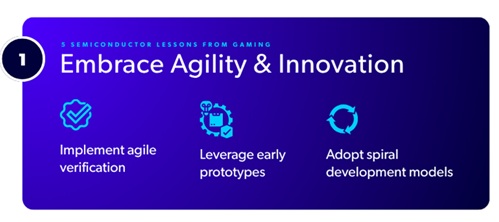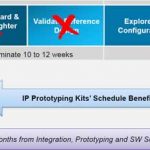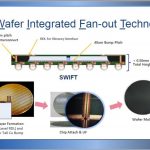Israel has a strong pedigree in functional verification. Among others, Verisity (an early contributor to class-based testbench design and constrained random testing) started in Israel and RocketTick (hardware-based simulation acceleration), acquired more recently by Cadence, is based in Israel. So when I hear about an … Read More
 Think Quantum Computing is Hype? Mastercard Begs to DisagreeJust got an opportunity to write a blog…Read More
Think Quantum Computing is Hype? Mastercard Begs to DisagreeJust got an opportunity to write a blog…Read More TSMC Kumamoto: Pioneering Japan's Semiconductor RevivalIn the lush landscapes of Kumamoto Prefecture, on…Read More
TSMC Kumamoto: Pioneering Japan's Semiconductor RevivalIn the lush landscapes of Kumamoto Prefecture, on…Read More Memory Matters: The State of Embedded NVM (eNVM) 2025Make a difference and take this short survey.…Read More
Memory Matters: The State of Embedded NVM (eNVM) 2025Make a difference and take this short survey.…Read More 5 Lessons the Semiconductor Industry Can Learn from GamingBy Kamal Khan The semiconductor world has always…Read More
5 Lessons the Semiconductor Industry Can Learn from GamingBy Kamal Khan The semiconductor world has always…Read MoreAMAT reports strong Q and even better guidance
Last quarter we said that AMAT got its mojo back and it appears to have even picked up speed going into the end of a strong year.
The display business which had been less than reliable in years past has come up with back to back home runs. Applied is growing both its top and bottom line at well above the sluggish market rates and is clearly… Read More
Alphabet vs. Radio: Traffic Info Smackdown
Alphabet is showing signs of taking over just about every infotainment function in cars except one: traffic information. When Alphabet, aka Google, arrived on the automotive scene the company and its minions quickly grasped that there was going to be a big opportunity for search, voice, navigation, maps, traffic and contextual… Read More
Five Ways IoT is Changing Trends in Cognitive Business
How is the Internet of Things, or IoT, changing trends in cognitive business? The impact is evident with the alliance between computers and humans. Computers still quickly assimilate and spew out data based on what is seen, heard and read. The difference is that they are now reasoning, understanding, and learning from those processes,… Read More
4 Reasons for Bluetooth 5 Adoption in IoT
IoT devices have to be connected but power consumption is usually a real concern. If you think about wearables, like for example fitness wristbands, the time between charges could make or break the product. Even if Wi-Fi looks attractive to connect an IoT device, the system developers have quickly realize that the power consumption… Read More
What is Inside the iPhone 7?
TSMC is the bellwether for not only the foundry business, since they are the dominant player, but also the semiconductor industry as a whole. You could also argue that TSMC is a sneak peek into the world economy since they build capacity based on their customer’s forecasts and the world now revolves around semiconductors.
The other… Read More
More on HAPS hybrid prototyping for ARMv8 with Linaro
A few weeks ago we previewed a Synopsys webinar describing how they are linking the ARM Juno Development Platform with the HAPS-80 and HAPS ProtoCompiler environment. I’ve had a look at the archived event and have some additional thoughts.… Read More
The Package Assembly Design Kit (PADK)… the start of something big
Integrated wafer-level fanout (WLFO) packaging technology is emerging as a foundation for multi-die solutions. Mobile product applications require focus on both aggressive chip-to-chip interface performance, as well as the final package volume. Traditional multi-chip packages using PCB laminate substrates do not readily… Read More
Foundation IP for Automotive: so Stringent Quality Requirements!
The Automotive IC market is not the largest segment, but is certainly the segments expected to grow with the highest CAGR, with 10.8% from 2013 to 2018, according with IC Insights (January 2015). If you consider the pretty long concept/design to production cycle time (7 years or more) as well as the numerous segments just emerging… Read More
If an Intel 10nm transistor fell in the ARM forest
Intel’s news at IDF this week about partnering with ARM for foundry services on 10nm set off some wild speculation. It’s not a surprise that ARM would enable Intel – they’ve worked together before, ARM is an equal opportunity ecosystem partner, and ARM has publicly announced 10nm cores taped out at TSMC.… Read More






AI RTL Generation versus AI RTL Verification